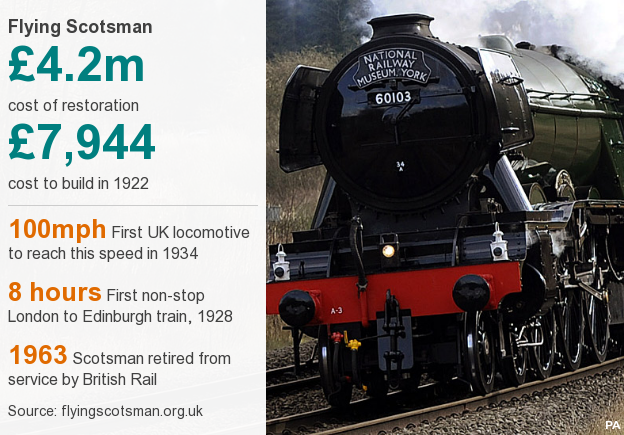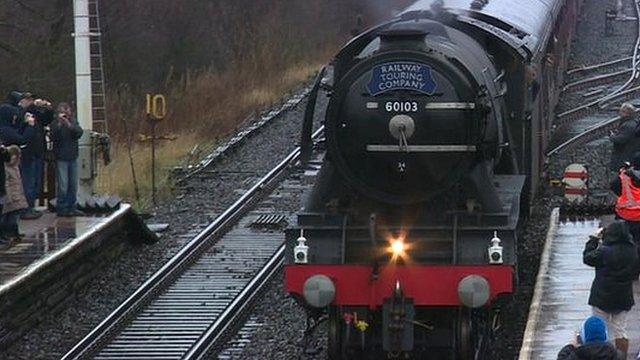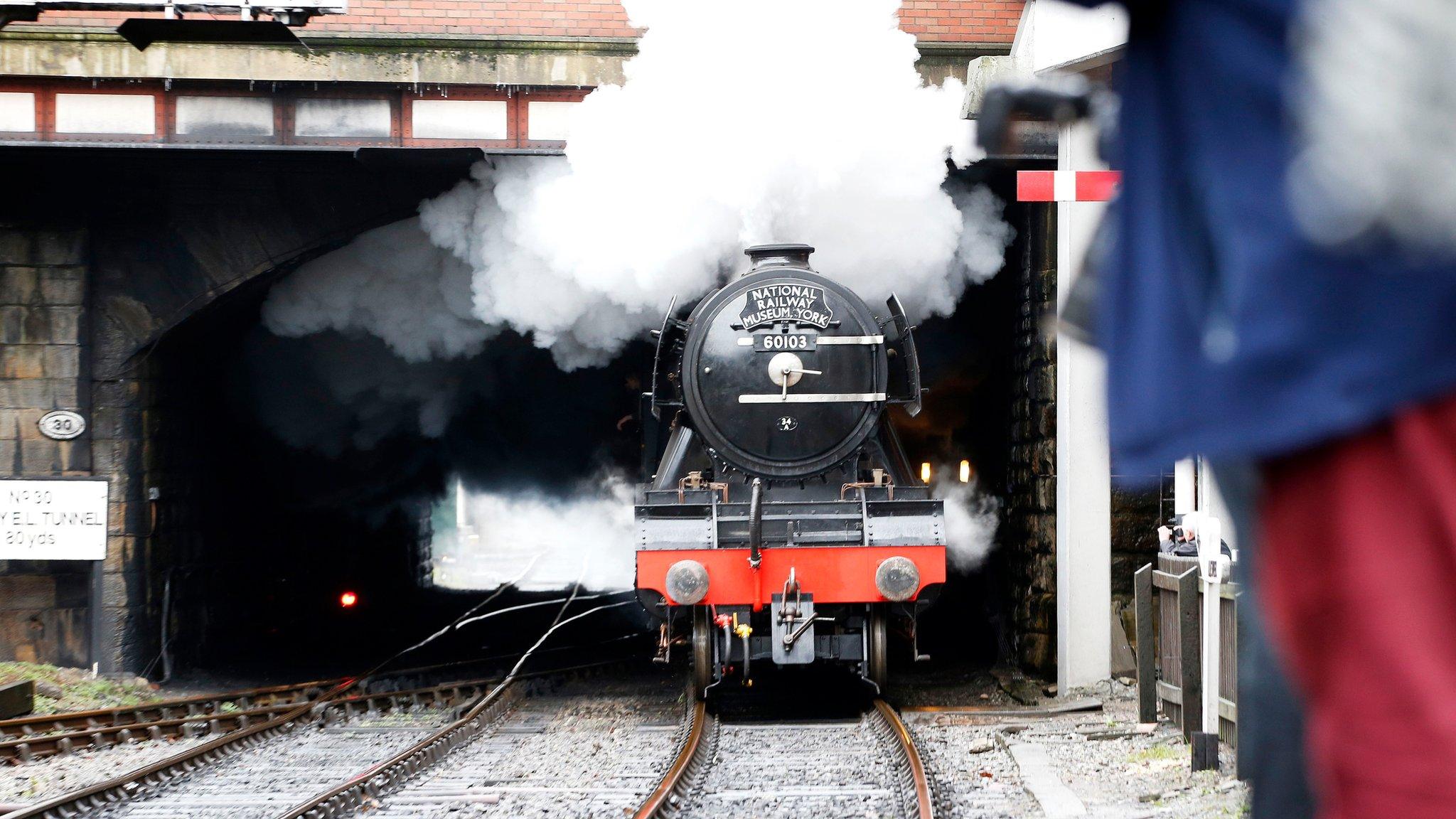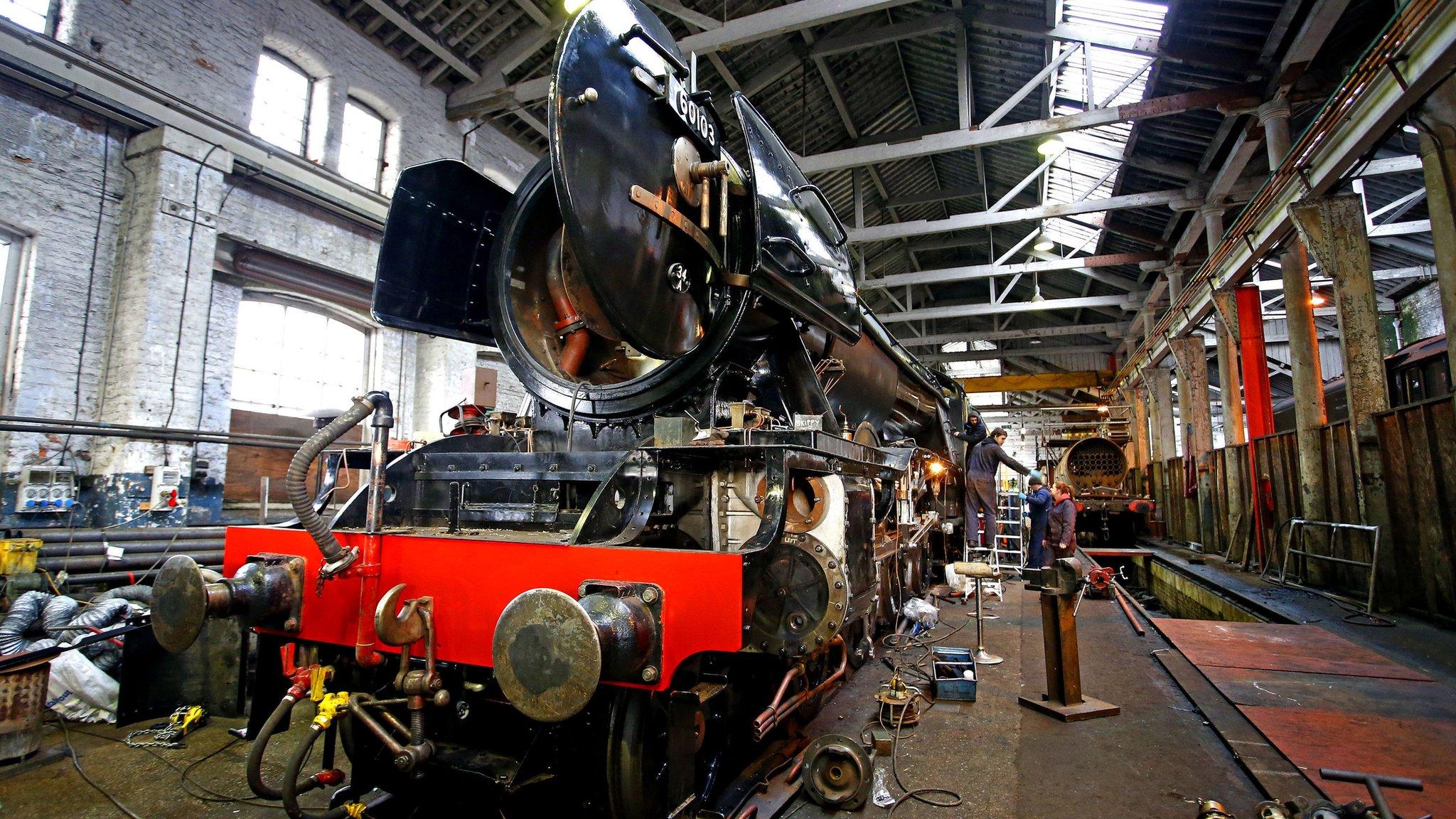Flying Scotsman summer tour begins with trespass warning
- Published

Flying Scotsman will travel from York to Newcastle on the first leg of its summer tour
A warning has been issued to Flying Scotsman fans to stay clear of the tracks as it begins a summer tour.
In February, Flying Scotsman made the journey from London King's Cross to York, on its inaugural run after a decade-long, £4.2m refit.
It arrived in York an hour later than expected after it was twice held up by reports of people on the line.
Network Rail said the day was marred in parts by "several dangerous incidents of trespass".

The locomotive's inaugural journey was delayed by people trespassing on the tracks
The firm said photographs shared online showed crowds of people, including young children, stood in the path of oncoming trains, with their view obscured by plumes of steam and smoke from the engine.
Phil Hufton, Network Rail managing director, England and Wales, said: "While the turnout to see Flying Scotsman so far has shown the passion and support for steam engines... the images of people stood on the railway taking photographs were deeply concerning.
"I cannot stress enough how dangerous it is to go onto the railway without training and permission."
Flying Scotsman, which retired from service in 1963, starts its summer tour programme later with a sold-out run, external from York to Newcastle.
Flying Scotsman: Guard shouts at trespassers as train halted near St Neots
During its inaugural journey in February, it was brought to a standstill near St Neots after reports of around 60 people trespassing on the track. No arrests were made.
The train was halted a second time north of Doncaster following further reports which were later found to be false.

Flying Scotsman

Designed by Sir Nigel Gresley, Flying Scotsman emerged from Doncaster Works on 24 February 1923
The British Empire Exhibition in 1924 made Flying Scotsman famous
In 1934, Scotsman was clocked at 100mph - officially the first locomotive to have reached that speed. But some claim City of Truro was the first steam engine to break the 100mph record, in 1904, when it apparently reached a speed of 102mph running down a slope
It is 70ft (21m) long, weighs about 96 tonnes and had a top speed of 100mph
It has travelled approximately 2,500,000 miles
During World War Two it was repainted wartime black
By 1995 it was part-owned by record producer Pete Waterman
The engine was bought for the nation in 2004 by the National Railway Museum, external (NRM) in York using £415,000 in public donations, a £365,000 gift from Sir Richard Branson and a £1.8m grant from the National Heritage Memorial Fund

- Published25 February 2016

- Published17 February 2016

- Published7 February 2016

- Published7 February 2016

- Published6 February 2016

- Published6 February 2016

- Published8 January 2016

- Published8 January 2016

- Published8 January 2016

- Published5 January 2016
